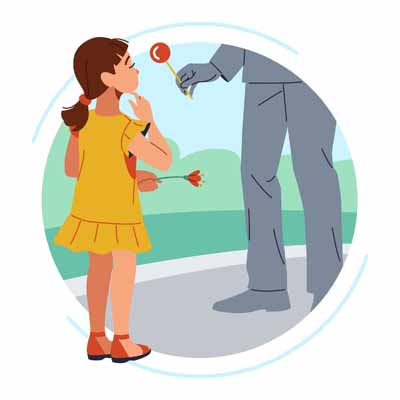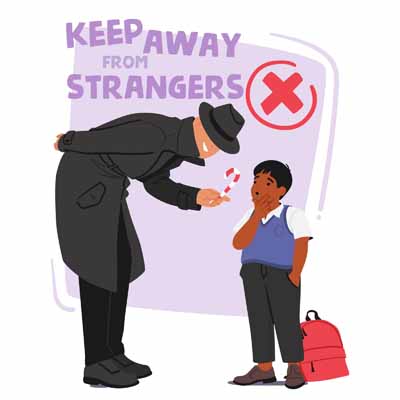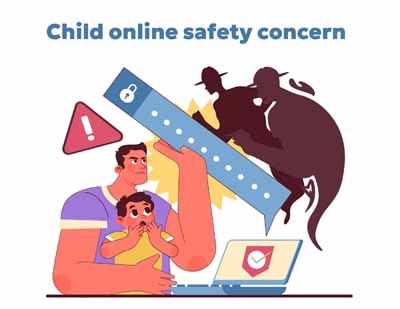In a world where our children are constantly exposed to new environments and people, teaching them about strangers is crucial. It is important to approach this topic in a way that emphasises safety without fear. By equipping children with practical safety tips for kids, we can help them navigate their interactions with strangers confidently and securely. This article will explore essential stranger safety tips and address the concept of stranger danger for kids.
Understanding the Concept of Strangers
Before diving into stranger safety for kids, it is essential to comprehend the word stranger. A stranger is anyone whom the child is not familiar with. This can include people they see regularly but do not interact, such as a neighbour they have never spoken to or a person they see at the park. It is important to note that not all strangers are dangerous, but children must be cautious around unfamiliar individuals.

The Importance of Safety Education
Educating children about safety is warning them about the potential dangers and empowering them with the knowledge along with the skills to protect themselves. Here are some safety tips for kids that can help them while interacting with strangers.
- Stay Close to Trusted Adults:
- Know Emergency Contacts:
- Recognize Safe Adults:
- Avoid Sharing Personal Information:
- Instincts:
Teach children to stay close to parents or guardians, in public places. This reduces the risk of them wandering off and encountering strangers alone.
Ensure children know their full name, address, and a parent’s phone number. This information is crucial if they ever need to seek help.
Help children recognize safe adults like police officers, teachers, or workers at stores to seek help when needed.
Children should understand the importance of not sharing personal information, such as their name or address, with strangers.

Teach kids to trust their instincts, if someone makes them feel uncomfortable and seek help from a trusted adult.
Teaching Stranger Safety without Fear
The goal is to teach kids about strangers’ safety without instilling fear in them. Here are some ways to achieve this.

- Use Positive Language:
- Role-Playing Scenarios:
- Discuss Safe and Unsafe Situations:
Instead of focusing on the dangers, emphasise the importance of being aware and cautious. For example, tell them that “we should be cautious with people we are not familiar with” instead of “strangers are dangerous.”
Engage children in role-playing exercises where they learn to react when approached by a stranger. This can include saying “no,” running away, and finding a trusted adult.
Talk about different scenarios and help children distinguish between safe and unsafe situations. For instance, tell them that it is safe to trust a known store clerk if they are lost but not to accept a ride from someone they do not know.
Addressing Common Misconceptions
One common misconception is to say that all strangers are dangerous. While it is true that children need to be cautious, it is also important to teach them about a balanced approach to strangers. This helps prevent unnecessary fear and anxiety.
Another misconception is that stranger danger only applies to young children. In reality, stranger safety applies to all ages. Teenagers also need to be aware of handling interactions with strangers, especially in situations when they are alone.
Integrating Safety Education into Daily Life
Safety education is an ongoing process that must be integrated into daily life. Some practical ways to incorporate stranger safety tips into everyday activities are –
- Walk and Talk:
- Use Media:
- Encourage Open Communication:
During walks or outings, discuss potential scenarios and ask your child what they would do. This helps reinforce safety tips in real-world scenarios.
Use books, videos, and games that teach safety concepts in an engaging way. This can make learning about safety more enjoyable for children.

Create an environment where children feel comfortable discussing their concerns and experiences. This openness allows you to address any fears or misconceptions they might have.
The Role of Schools and Communities
Schools and communities play a vital role in promoting stranger safety for kids. Some of the ways they can contribute are –
- Safety Programs:
- Community Involvement:
- Parental Involvement:
Schools can implement safety programs that teach children about stranger safety in a structured manner. These programs can include workshops, assemblies, and interactive activities.
Communities can organise events and initiatives that promote safety awareness. This can include neighbourhood watch programs, safety fairs, and collaboration with local law enforcement.
Encourage parents to be actively involved in their child’s safety education. This can include attending school safety programs, participating in community events, and reinforcing safety tips at home.
Addressing the Influence of Media
In today’s digital age, children are exposed to various forms of media that can influence their perception of strangers. It is important to address these influences and guide them to interpret what they see and hear.
- Discuss Media Content:
- Monitor Online Activities:
- Provide Context:
Talk to your children about the shows, movies, and games they watch and play. Discuss the difference between fictional and real-life situations.
Teach kids about the consequences of sharing personal details online and to be careful when talking to people they don’t know on the internet.
When discussing media content, provide context and explain reasons behind the behaviours are portrayed. This helps children develop a critical understanding of what they see.
Conclusion
Teaching kids about strangers is a balanced task of keeping them safe and not making them overly scared. We can help children feel confident to explore the world by sharing safety tips in a positive manner. The aim is to give them the clarity and understanding to stay safe while also feeling secure and happy. With regular education, open talks, and community support, we can build a safer space for our kids.
For more such informative/interesting blogs, visit Center Point School





